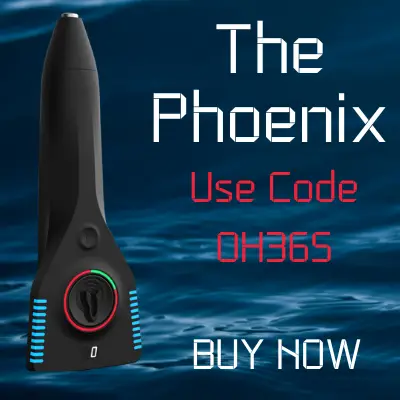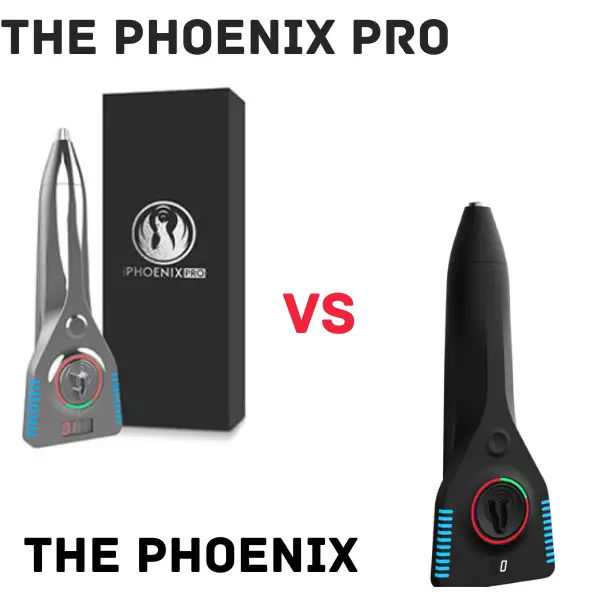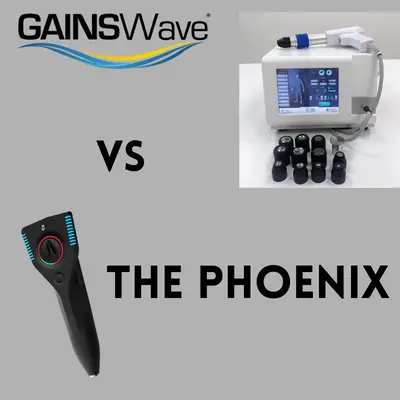Dealing with erectile function can be a struggle, but tools like the Phoenix and The Phoenix Pro can improve your life in this area. While both focus on using acoustic wave treatments to address ED, there are a few key differences to consider before making a decision.
| The Phoenix | The Phoenix Pro | |
| How to Obtain | Through website | Following professional consultation and recommendation |
| Average Cost | $879 (financing available) Use BFA300 FOR $300 OFF | Upwards of $3,000 (barring additional medical costs) |
| Pulse Speed | 15,000 pulses per times treatment | 20,000 pulses per timed treatment |
| Lockout Features | 36 hours | No |
| Sunset Mode | Full strength for 70 sessions/1 million pulses | Sunset after 50 sessions/ 1 million pulses |
Understanding the basis of Shockwave therapy helps you make sure this method of treatment is right for you. From there, you can evaluate the similarities and differences of The Phoenix and the Phoenix pro to determine which one best suits your situation.

Acoustic wave therapy, also referred to as Shockwave therapy, is a common treatment for Erectile Dysfunction. It involves the use of a specialized device to emit high-intensity sound waves into the penis.
This type of therapy assists by breaking up any plaque blockages in the blood vessels that decrease blood flow. The micro-trauma caused by Shockwave therapy roughs up the penile tissue enough to stimulate the growth of new blood vessels, further improving blood flow.
The wand-like devices used in acoustic wave therapy simply run along the penis while emitting sound waves through their tip. You might hear a slight clicking or banging, but that’s only to create the sound waves needed for the therapy to work.
Seeing words like “shock”, “trauma”, and “penis” so close together may be alarming, but this procedure is known to be safe, painless, and extremely effective. The larger hurdle to clear is the awkwardness of learning to do it on your own.
Most will see results within 6 treatments, but some require more for maximum results. Follow-up treatments are beneficial in maintaining a high level of erectile quality, but this can be expensive if you’re dealing with in-office visits.
The Phoenix and The Phoenix Pro bring Shockwave therapy home to you so you aren’t footing the bill for an office visit multiple times a week. These tools offer you safe and effective treatment from the comfort of your own home, but you need to determine which is best for your situation before you can get started.
The Phoenix vs The Phoenix Pro: Similarities
The Phoenix and The Phoenix Pro are rooted in the same therapy and treat the same issues using the same process. The results you see are not likely to differ depending on which model you go with, but you should be prepared for certain side effects while using The Phoenix or The Phoenix Pro.
Targeted Issues and Intended Users
The Phoenix and The Phoenix Pro are intended to target those struggling with erectile dysfunction. The main issue that they target is restricted blood flow, the leading cause of erectile dysfunction.
These devices are aimed at those:
- Who would benefit from acoustic therapy
- Want to try for non-invasive procedures
- Can’t afford any downtime for treatments
- Want to stay away from drugs
- Prefer getting their results at home
These are FDA Class I devices, meaning that they are not intended for use in supporting or sustaining life. While these devices are considered to have a low impact on overall health, they are cleared for use in improving your sexual health and function.
Technology
Both The Phoenix and The Phoenix Pro use full-strength acoustic wave technology to target the issues listed above. These differ from other devices and procedures, such as the GAINSWave treatment, by providing a way to take the technology out of the office.
Acoustic wave technology is effective in breaking up plaque in the existing blood vessels to increase blood flow through the penis, and as the waves pass through the penile tissue they encourage growth of new, healthy blood vessels. Both devices use sound waves at the same level of power during treatments, but the frequency of the pulses differs.
Method of Use
The wands appear the same, and there is no difference in how you use them in a session.
Start by plugging the AC adapter in and powering on the device. It will run through a startup cycle to make sure everything is functioning properly and let you know how many times the device has been used.
You can apply numbing cream if needed (most don’t need it), but applying a water-based lubricant to the device or your penis is necessary for proper movement.
When everything is ready, press the start button and a light will show up near the center of the device to tell you where to use it.
There are five positions for use: one on the top of the shaft, and two on each side. You do not use The Phoenix or The Phoenix Pro around your urethra.
The lights help you keep pace as you run the device along the penis shaft, starting just below the head. As they move down, move the tip of the device down along the shaft. You should reach the bottom when the lights are all the way down.
The Phoenix or The Phoenix Pro will prompt you to take 10 passes before shutting off and prompting you to move to the next position. Repeat the process until it is complete. While the method of use can be awkward to get the hang of, it’s a simple process. The detailed instructions or consulting your doctor can help answer any questions you may have.
Results
Because of the technology used, you can expect similar results from each device.
A 2019 study shows that Shockwave therapy significantly improved erectile function, particularly for men with vasculogenic ED.
Another pilot study in 2010 found that all participants experienced improvement with their erectile function after 6 months of the therapy, and their follow ups reported no adverse effects.
These are the results you can expect from The Phoenix and The Phoenix Pro, and you can look into personal testimony on both products’ sites.
Potential Side Effects
As the results are the same, you can expect similar potential side effects. Both The Phoenix and The Phoenix Pro are safe to use and most report no side effects, but there is the chance of:
- Bruising
- Blood in urine
- Skin infection
- Painful erection
- Pain or difficulty during intercourse (derived from the issues listed)
These are mostly temporary issues, but understanding the risks is important in making your decision.
The Phoenix vs The Phoenix Pro: Differences
The main (and pretty much only) differences between The Phoenix Pro are:
- Cost and how to obtain the devices
- Pulse speed
- Lockout features
- Sunset modes
While this list is short, these are substantial enough to lock in your decision.
Cost and How to Obtain
The Phoenix maintains a listed price of $879 but with code OH365 you can get $85 off. They run sales often depending on holidays, referrals, and whether you subscribe to their emails. You can also finance the purchase if you qualify on the site. You can purchase The Phoenix directly from the site without a referral or any documentation from your medical provider.

The Phoenix Pro is only available after you have a consultation with one of their certified physicians. You can schedule a free consultation directly from the site to learn more about the device.
Because you’re running through a third party, prices for The Phoenix Pro can easily climb upwards of $3,000. This covers their cost of receiving and distributing the device, but it does not include other medical procedures, such as:
- Office visits
- Tests
- Additional medicine or procedures
The difference in price does not indicate much difference in quality or features, apart from what is listed below.
Pulse Speed
The Phoenix runs a slower pulse speed of 15,000 pulses per timed treatment, while The Phoenix Pro gets up to 20,000 pulses per timed treatment. The treatment times for the two stay in the same range of 15 to 20 minutes, so this indicates The Phoenix Pro is about 1.3x as vigorous.
Lockout Features
The Phoenix includes a 36 hour lockout feature that prevents starting another session before the time is up. This is useful to prevent accidental overuse, but it’s also a safeguard for those a bit too excited to regain penile function.
The Phoenix Pro does not have a lockout feature to allow you to create a customized plan with your doctor. You should follow this strictly, report back with results, and adjust the plan as needed.
Sunset Mode
The Phoenix Pro does have a sunset mode, which means it will deactivate after 50 treatments or 1 million pulses. This prevents you from using a medical device that operates at a lower effectiveness than counted on for treatment.
The Phoenix does not have this, and it will operate at full strength for as long as it can. It starts to lose effectiveness after 70 treatments or 1 million pulses.
Final Recommendation
While there is a slight decrease in performance, The Phoenix comes out on top. The lower upfront cost, lack of a sunset mode, and integrated safety features make it the better tool for at home ED treatment
References
https://www.nature.com/articles/s41443-019-0117-z
https://www.europeanurology.com/article/S0302-2838(10)00304-0/fulltext
https://www.getmyphoenix.com/reviews/
https://phoenixprorx.com/#reviews
https://www.getmyphoenix.com/
https://phoenixprorx.com/doctors/phoenixhim/
https://www.getmyphoenix.com/phoenix/
https://phoenixprorx.com/phoenix-him/
https://www.medicalnewstoday.com/articles/shockwave-therapy-for-ed
https://themonstersite.com/the-phoenix-vs-phoenix-pro-the-obvious-choice/
https://www.qualio.com/blog/fda-medical-device-classes-differences
https://themonstersite.com/review-of-the-phoenix-the-at-home-acoustic-wave-therapy-device/
https://www.healthline.com/health/shockwave-therapy-for-ed





5 responses to “The Phoenix vs The Phoenix Pro: Which One is Right for You?”
[…] Shockwave therapy is an FDA-approved therapy that is meant for deeper and more chronic pain, rather than superficial and acute injuries. You will most commonly find Shockwave Therapy in use for the following types of injuries: […]
[…] Shockwave therapy at home will provide you with a way to build your own treatment plan based on your daily schedule. You will not have to work an office visit into your day anymore. But you may be asking if the cost of the machine is worth the return. Honestly, that is a question only you can answer, but let’s look at some products that can be found on the internet and their cost. […]
[…] the only ‘medical-grade’ shockwave device that you can use at home. All of the other acoustical shockwave devices that you can purchase online are not considered to be […]
[…] Shockwave therapy at home will provide you with a way to build your own treatment plan based on your daily schedule. You will not have to work an office visit into your day anymore. But you may be asking if the cost of the machine is worth the return? If your looking for a shockwave therapy machine for home use I recommend The Phoenix by Launch Medical. […]
[…] Differences between The Phoenix vs The Phoenix Pro […]